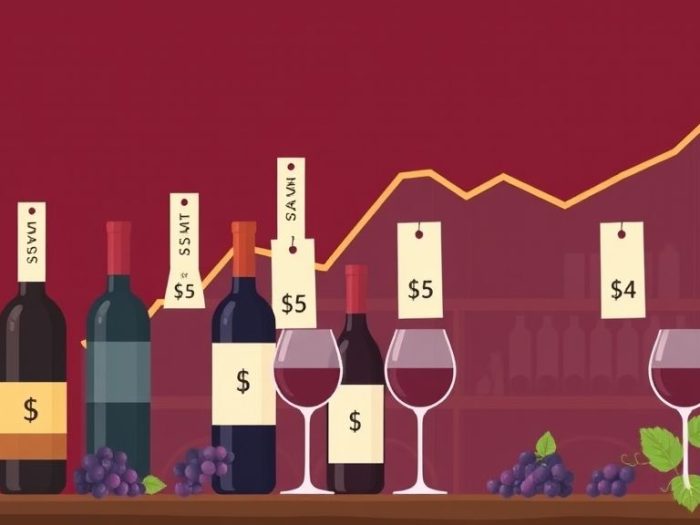Investing in fine wine has become an attractive alternative investment, offering the potential
for significant returns. While achieving a guaranteed 12%+ annual return is not always
possible, strategic collecting and market knowledge can increase your chances of success.
This article provides a guide on building a wine collection for investment purposes.
Understanding Wine as an Investment
Fine wine, particularly certain vintages and regions, can appreciate in value over time due to:
- Limited Supply: Production is limited, and bottles are consumed, reducing availability.
- Increasing Demand: Global demand for fine wine continues to grow, especially from collectors and investors.
- Aging Potential: Fine wines improve with age, enhancing their desirability and value.
Key Factors Influencing Wine Value
- Vintage: The year the grapes were harvested, significantly impacting quality.
- Producer: Renowned producers with a history of quality command higher prices.
- Region: Certain regions are known for producing exceptional wines.
- Scores: Wine critics’ scores (e.g., Robert Parker points) influence market perception.
- Condition: Proper storage is crucial for maintaining wine quality and value.
- Rarity: Limited production and bottle availability increase rarity.
Building a Wine Collection for Investment
1. Research and Education
Thorough research is essential:
- Learn about Regions: Focus on regions with a strong track record (e.g., Bordeaux, Burgundy).
- Study Producers: Identify producers with consistent quality and high scores.
- Understand Vintages: Research the quality of different vintages.
- Follow Critics: Monitor wine critic scores and reviews.
2. Focus on Investment-Grade Wines
Prioritize wines with:
- Proven track record of price appreciation.
- High critic scores.
- Good aging potential.
- Limited production.
3. Diversify Your Collection
Spread your collection across different regions, producers, and vintages to mitigate risk.
4. Proper Storage
Invest in proper storage conditions:
- Temperature control (around 55°F).
- Humidity control (around 70%).
- Darkness.
- Minimal vibration.
5. Purchase from Reputable Sources
Buy from established wine merchants, auction houses, or directly from producers to ensure authenticity and provenance.
6. Consider Professional Advice
Consult with a wine advisor or broker for expert guidance.
Potential Returns and Time Horizon
While 12%+ annual returns are a target, actual returns can vary significantly. Wine investing is generally a long-term investment, with optimal returns often realized over 5-10 years or more.
Risks of Wine Investing
- Market Volatility: Wine prices can fluctuate based on economic conditions and collector demand.
- Storage Risks: Improper storage can damage wine and decrease its value.
- Counterfeit Wines: The market has a risk of counterfeit bottles.
- Liquidity: Selling wine can take time, especially for less popular wines.
- Insurance and Security: You’ll need insurance and secure storage.
Conclusion
Wine investing can be a rewarding endeavor for those passionate about wine and willing to conduct
thorough research. By focusing on investment-grade wines, ensuring proper storage, and managing
risks, you can potentially build a valuable collection. However, remember that wine investing
is not without risks, and patience is essential for long-term success.
Related Keywords
Wine investing, fine wine investment, wine collecting, investment grade wine, wine market,
wine auction, wine storage, wine portfolio, wine investment strategy, alternative investments.
Frequently Asked Questions (FAQ)
1. What makes fine wine a potential investment?
Fine wine can appreciate in value due to limited supply, increasing demand, and its ability to improve with age.
2. What are the key factors that influence wine value?
Key factors include the vintage, producer, region, critic scores, condition, and rarity of the wine.
3. What is a wine vintage?
A wine vintage refers to the year the grapes were harvested, which significantly impacts the wine’s quality and characteristics.
4. What are wine critic scores?
Wine critics assign scores to wines, which can influence their market perception and price.
5. What does “investment-grade wine” mean?
Investment-grade wine refers to wines with a proven track record of price appreciation, high critic scores, and good aging potential.
6. How important is proper storage for wine investment?
Proper storage is crucial. Temperature, humidity, light, and vibration control are essential to maintain wine quality and value.
7. What are the potential returns from wine investing?
While returns can vary, fine wine has the potential to offer attractive returns over the long term, but they are not guaranteed.
8. What are the risks of wine investing?
Risks include market volatility, storage risks, the possibility of counterfeit wines, and limited liquidity.
9. Is wine investing a short-term or long-term strategy?
Wine investing is generally a long-term strategy, with optimal returns often realized over 5-10 years or more.
10. Should I consult a professional before investing in wine?
Consulting with a wine advisor or broker is recommended, especially for those new to wine investing, to get expert guidance.



